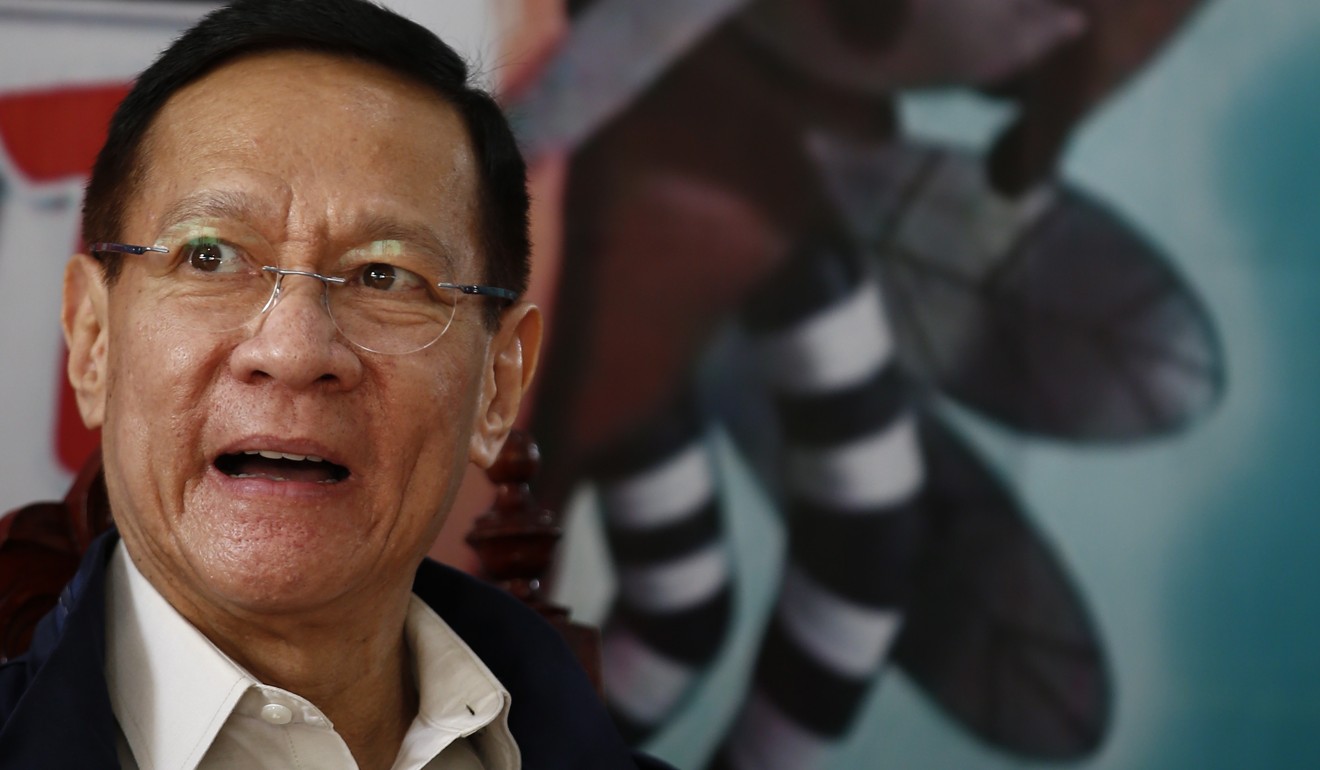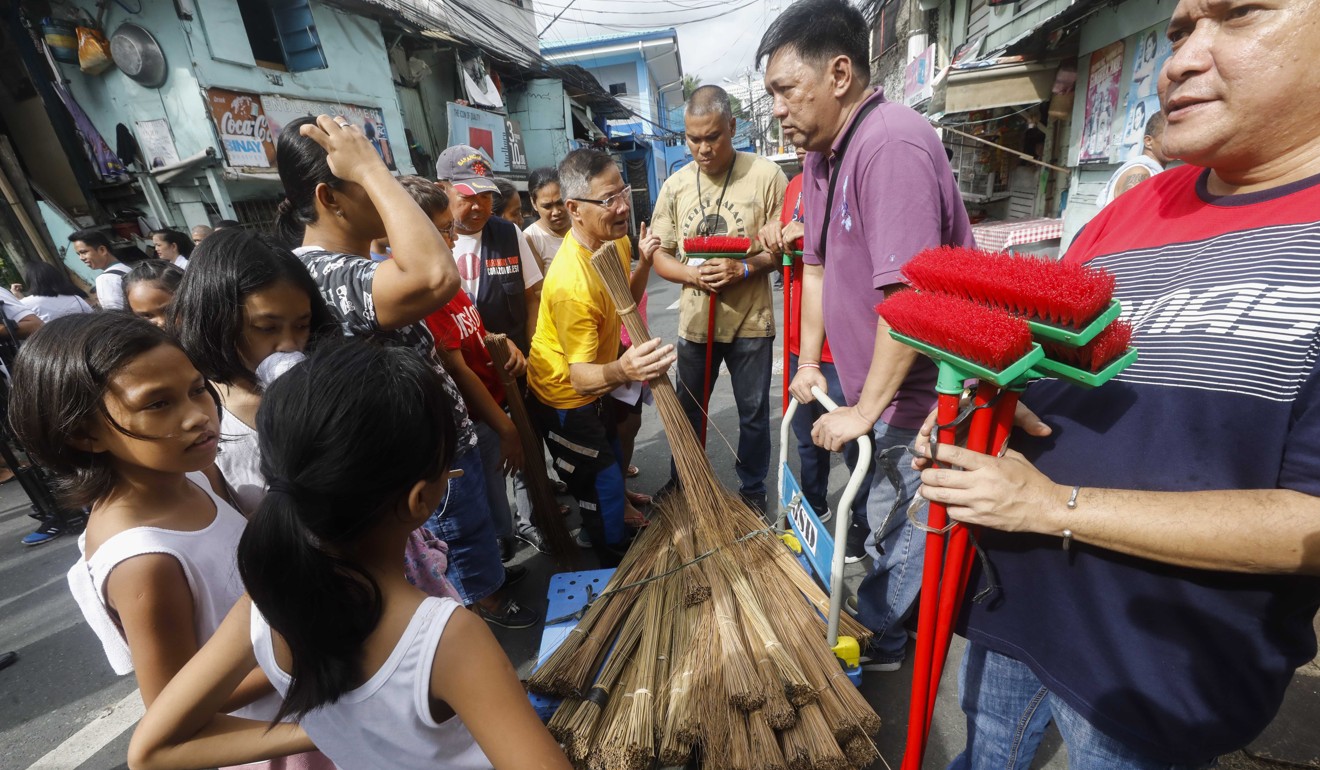
Toads, fish and herbal tea used to fight dengue as epidemic spreads across the Philippines
- Villages have poured frogs and mosquitofish in canals to target the larvae of Aedes mosquitoes
- But experts have warned that the predators may themselves become toxic pests

Nearly two years after the Philippine government rejected the world’s first dengue vaccine, communities across the country are turning to toads, fish, bags of rice and herbal teas to fight a dengue epidemic that has so far killed about 900 people and infected 209,000 others.
Last week, officials of one village in Metro Manila released a thousand toads into canals and waterways to eat the larvae of the Aedes mosquitoes that transmit the disease. In Pangasinan province, inhabitants poured thousands of mosquitofish into rivers and creeks to hunt down the larvae. In the village of Alion in Bataan province, residents were offered a unique bounty: one kilo of rice for every 200 mosquitoes killed.
Meanwhile, some local scientists have recommended drinking tea made from local herbal plants – either tawa-tawa or papaya – to treat people suffering from the disease.
Health secretary Francisco Duque III told the Post that the number of dengue cases and deaths in the first seven months of this year were nearly double what they were for a similar period last year.

The Philippines is not alone – the dengue epidemic runs across Southeast Asia. According to Duque, “the World Health Organisation says there’s a three-year cycle of dengue epidemics that happen mostly in Southeast Asia – but with [the Philippines] it looks like it’s already occurring every other year”.
The Philippines has a large number of cases, but not the highest increase, said Duque, who is a doctor.
“According to the WHO Western Pacific report, Laos, Vietnam and Singapore posted between 300- to 450-per-cent increases in their dengue cases from January to July 2019, compared with a similar period last year. The Philippines and Malaysia posted almost 100 per cent,” he said.
The Department of Health declared a national dengue epidemic on August 6.

There is no cure for dengue, a viral disease marked by high fever, severe muscle and joint pain, rashes and nausea. Nearly all patients recover but a small number develop severe dengue, a potentially fatal complication marked by severe bleeding and loss of blood platelets.
In 2016, the Philippines launched a much-hyped national vaccination campaign using the world’s first dengue vaccine, dengvaxia, by French drugs firm Sanofi Pasteur. The programme was abruptly terminated and the drug was banned in 2017 after the manufacturer revealed the drug could be dangerous to subjects who had never been infected with dengue.
The dengvaxia controversy, exploited for publicity by politicians and government officials, left many Filipinos wary of vaccines in general. But now, with the announcement of the epidemic, there are reports some well-off parents are sending their children to Singapore to get dengvaxia shots.
Asked if he would recommend the vaccine, Dr Benjamin Felipe, an adult infectious diseases specialist, said: “Yes, but there is the problem of determining whether the recipients have already contracted dengue in the past. We don’t have a reliable test for measuring that.”
Health secretary Duque said that according to the WHO, the vaccine offers about a 60 per cent chance of protection for those who have previously had dengue.
Duque said while dengvaxia’s licence was revoked by the government, Sanofi Pasteur was welcome to reapply for its certificate of accreditation.

The health department’s national campaign against the epidemic is called “4S”: search and destroy mosquito breeding sites; self-protection through wearing long-sleeved clothes; seek early consultation; and support fogging and spraying in certain areas.
Efforts to fight the disease focus on prevention and control, much of it focused on overcoming the Aedes mosquito, which preys on humans and bites only in the daytime. “These mosquitoes are really geniuses – they go for the blind spots of humans, the sides of your neck and arms,” Duque said.
The communities that have released frogs and mosquitofish have gotten publicity, but environmentalists warn the pest controls might themselves become pests.
In an interview with GMA News, Leticia Afuang, an expert on amphibians and reptiles, said the creatures released by the Quezon City community were cane toads – which are highly voracious, toxic and invasive – rather than bull frogs as initially thought by village officials.
“I find them abundant in poultry areas where there is a lot of faecal material. Doing so, what will they get? Parasites themselves. They get diseases, they can be vectors of other diseases,” the professor said.
The toads could also breed rapidly even in harsh environments, Afuang told GMA News.
Another expert, Marites B Sanguila, told local news site Rappler that the species, called the Central American Cane Toad, had “colonised at least 24 islands across the Philippines” since its introduction in 1930 to combat pests in sugar cane plantations.
“While the initiative is of good intention, it is a risky undertaking, considering the biology of invasive species,” Sanguila told Rappler.

As for the mosquitofish, an environmental group noted it was “one of the most dangerous invasive species at a global scale”.
It could “invade neighbouring environments and can force local species to move away from their homes”, said the University of the Philippines Alliance of Advocates for the General Welfare of Animals in a Facebook post.
Meanwhile, the health ministry earlier this month said herbal tea has no therapeutic claims, local media reported.
Reacting to suggestions that herbal teas be used, Duque said: “The thing is, 99.6 per cent of dengue patients recover without [any medication]. The disease is self-limiting. What’s important is sustained hydration.”
Felipe, the infectious diseases doctor, said he tells patients who ask about tawa-tawa that “since there is no scientific basis for using it, we don’t recommend it”.